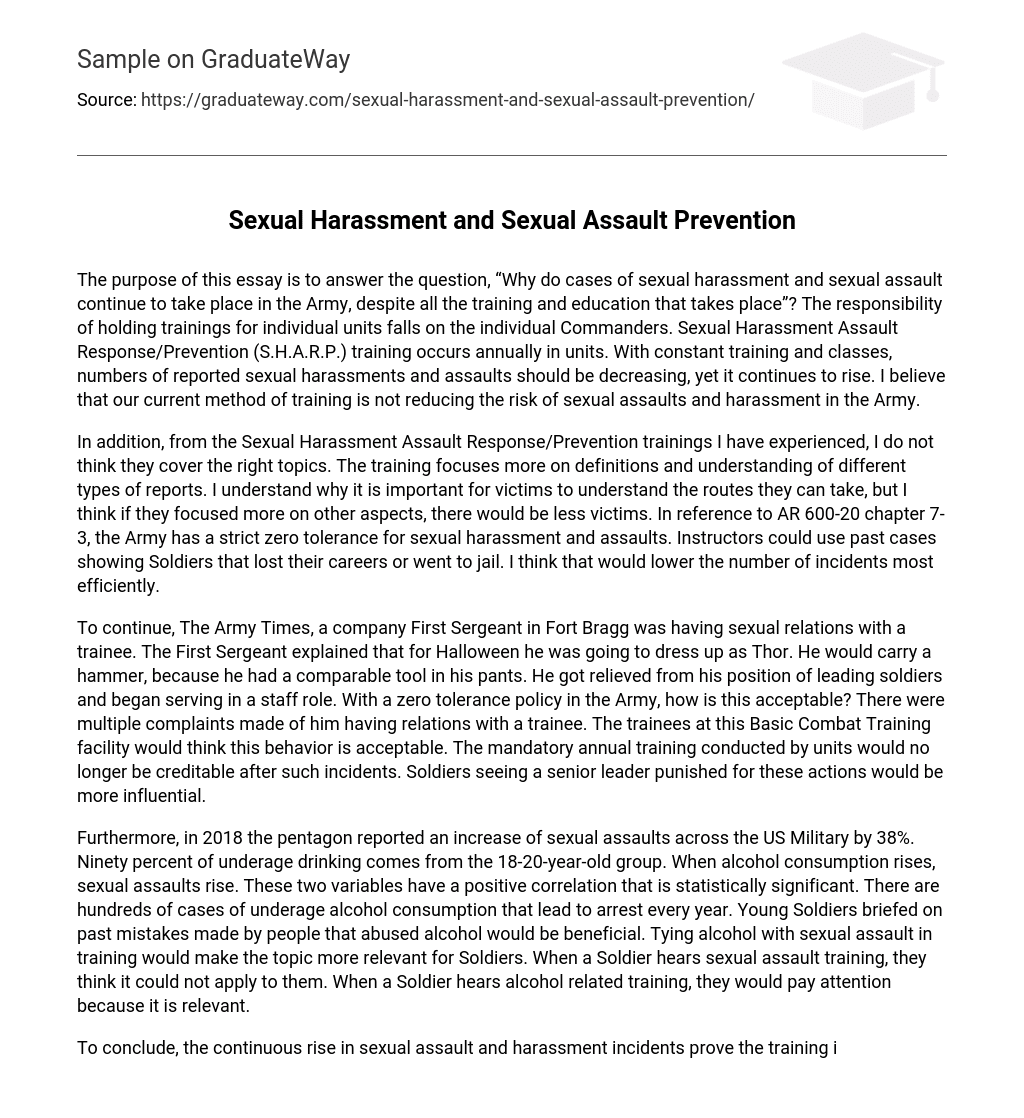The purpose of this essay is to answer the question, “Why do cases of sexual harassment and sexual assault continue to take place in the Army, despite all the training and education that takes place”? The responsibility of holding trainings for individual units falls on the individual Commanders. Sexual Harassment Assault Response/Prevention (S.H.A.R.P.) training occurs annually in units. With constant training and classes, numbers of reported sexual harassments and assaults should be decreasing, yet it continues to rise. I believe that our current method of training is not reducing the risk of sexual assaults and harassment in the Army.
In addition, from the Sexual Harassment Assault Response/Prevention trainings I have experienced, I do not think they cover the right topics. The training focuses more on definitions and understanding of different types of reports. I understand why it is important for victims to understand the routes they can take, but I think if they focused more on other aspects, there would be less victims. In reference to AR 600-20 chapter 7-3, the Army has a strict zero tolerance for sexual harassment and assaults. Instructors could use past cases showing Soldiers that lost their careers or went to jail. I think that would lower the number of incidents most efficiently.
To continue, The Army Times, a company First Sergeant in Fort Bragg was having sexual relations with a trainee. The First Sergeant explained that for Halloween he was going to dress up as Thor. He would carry a hammer, because he had a comparable tool in his pants. He got relieved from his position of leading soldiers and began serving in a staff role. With a zero tolerance policy in the Army, how is this acceptable? There were multiple complaints made of him having relations with a trainee. The trainees at this Basic Combat Training facility would think this behavior is acceptable. The mandatory annual training conducted by units would no longer be creditable after such incidents. Soldiers seeing a senior leader punished for these actions would be more influential.
Furthermore, in 2018 the pentagon reported an increase of sexual assaults across the US Military by 38%. Ninety percent of underage drinking comes from the 18-20-year-old group. When alcohol consumption rises, sexual assaults rise. These two variables have a positive correlation that is statistically significant. There are hundreds of cases of underage alcohol consumption that lead to arrest every year. Young Soldiers briefed on past mistakes made by people that abused alcohol would be beneficial. Tying alcohol with sexual assault in training would make the topic more relevant for Soldiers. When a Soldier hears sexual assault training, they think it could not apply to them. When a Soldier hears alcohol related training, they would pay attention because it is relevant.
To conclude, the continuous rise in sexual assault and harassment incidents prove the training is not effective. Trainings should cover more than just definitions and statistics. There should be more strict punishment for abusers. This would show peers and subordinates these types of behaviors are punishable no matter rank. Combining alcohol abuse training with sexual assault training would be beneficial. I believe adding these aspects to the training curricular would be beneficial.





